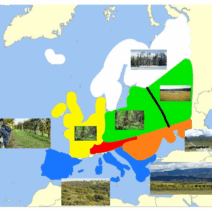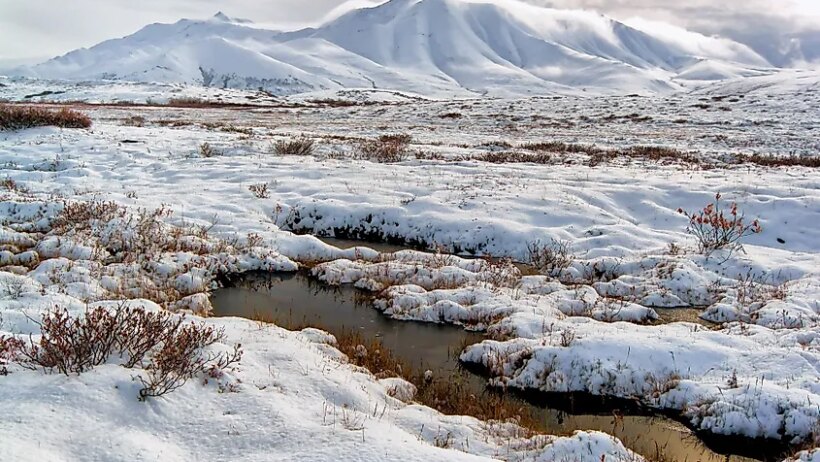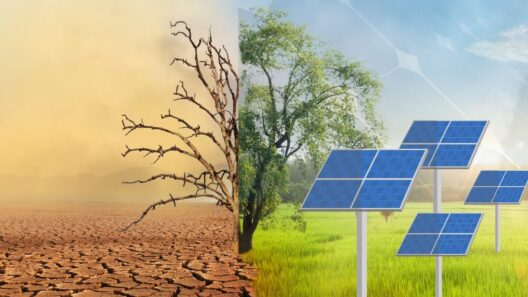The tundra climate is often regarded as one of Earth’s most inhospitable realms. Characterized by frigid temperatures, fierce winds, and a stark landscape, it is a region that commands both awe and concern. Despite its apparent barrenness, the tundra teems with life — albeit life that has uniquely adapted to withstand its extreme conditions. By examining the intricacies of this climate, we can cultivate a deeper understanding of its ecological significance and the critical challenges it faces due to global climate change.
At its core, the tundra can be classified into two distinct types: Arctic and alpine. Arctic tundra primarily exists in the polar regions, where it blankets vast expanses of land during the short summer months. The soil, known as permafrost, remains frozen year-round, creating a sublayer that profoundly influences the ecosystem. In contrast, alpine tundra occupies high mountain ranges across the globe, displaying similar conditions to its Arctic counterpart, albeit with a difference in elevation rather than latitude. Both tundra types share several common environmental characteristics: short growing seasons, stark vegetation, and extreme weather conditions.
The climate in these regions is defined by its short summers and long winters. Average temperatures during the warmest months rarely rise above 10 degrees Celsius (50 degrees Fahrenheit). Winter, on the other hand, can plunge to a bone-chilling -40 degrees Celsius (-40 degrees Fahrenheit), a testament to the extreme nature of the tundra. Snow cover persists for much of the year, and the sun’s rays strike at a low angle, providing insufficient warmth for typical flora and fauna.
The tundra’s vegetation is a revelation of resilience. Small hardy plants, including mosses, lichens, and low shrubs, flourish in this arctic wilderness, and their growth is stunted due to the relentless cold. These plants possess a unique ability to thrive in nutrient-poor soils. They also display growth patterns that allow them to maximize their photosynthetic potential during the fleeting summer. The vibrant hues of flowering plants during this brief period are not merely aesthetic marvels; they signify life’s audacious resurgence amid adversity.
While the tundra may appear barren, it is not devoid of biodiversity. Many animal species have adapted to the unforgiving environment, developing distinctive survival strategies. The Arctic fox, for instance, has a thick fur coat to insulate against the cold, while the caribou undertakes remarkable migrations in search of sustenance. Polar bears, the quintessential symbol of the tundra, rely on sea ice to hunt for seals, presenting a compelling case for the intricate dependencies present within this ecosystem. The fauna here has evolved to occupy specific niches, creating a finely balanced food web that can be disrupted by even minor perturbations.
However, this pristine environment is increasingly confronting existential threats from climate change. Average global temperatures are rising, which in turn affects permafrost stability and biodiversity. As permafrost thaws, it releases greenhouse gases like methane, exacerbating the climate crisis. Changes in temperature also influence migratory patterns, breeding seasons, and food availability for wildlife, leading to cascading effects throughout the ecosystem. Warming leads not only to habitat loss for iconic species but also to the encroachment of invasive plants and animals, which can further disrupt long-established ecological balances.
The challenge of addressing climate change encapsulates the debate on the fate of the tundra. Addressing issues such as fossil fuel extraction, pollution, and unsustainable development is paramount. Indigenous communities, who have long inhabited tundra regions, play a crucial role in advocating for conservation measures. Their traditional ecological knowledge can inform sustainable practices that align with contemporary environmental goals, making their voices invaluable within the context of environmental stewardship.
Moreover, the tundra has become a focal point for scientific research. As a sentinel of climate change, its response patterns can provide insight into global environmental shifts. The research conducted in these regions is not merely academic; it holds significance for humanity as a whole. Understanding the tundra can enhance our grasp of ecosystem functions, the interdependencies of life forms, and the impacts of climate dynamics. Each scientific endeavor contributes to a broader narrative of conservation, emphasizing the need for unified action against climate change.
The tundra, often overlooked in discussions about biodiversity and climate change, is critical to understanding the interconnectedness of Earth’s systems. Its resilience in the face of harsh realities is, paradoxically, a reminder of the precariousness of life. By fostering a broader awareness of its beauty and fragility, individuals and communities can champion initiatives that promote ecological preservation and sustainability.
In essence, the tundra is not merely a cold and desolate expanse but rather a potent symbol of resilience and a barometer of environmental health. As climate change continues to wreak havoc globally, revisiting our understanding of such ecosystems is not only a pursuit of knowledge but also a requisite for informed action. Every effort to conserve the tundra’s unique biodiversity represents a step towards preservation of our planet’s rich array of life.
To truly appreciate the tundra is to acknowledge both its beauty and its vulnerabilities. As stewards of the Earth, it is incumbent upon us to ensure that this remarkable biome is not relegated to the shadows of climate discussions. Instead, its critical role should be illuminated, advocating for an ethos of protection and respect for one of Earth’s most unforgiving yet wondrous realms.







